Nature: Long-distance navigation and magnetoreception in migratory animals
(迁徙动物的远距离导航和磁感受)
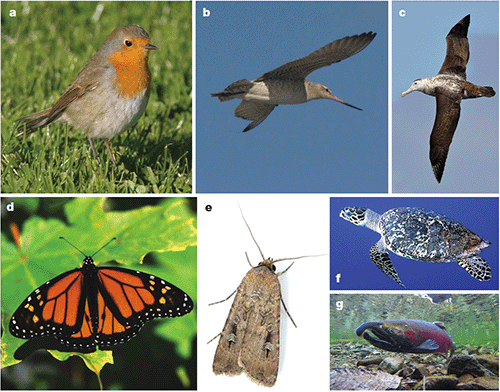
Some of the world’s most famous long-distance navigators. a, European robin (Erithacus rubecula). b, Bar-tailed godwit (Limosa lapponica). c, Wandering albatross (Diomedea exulans). d, Monarch butterfly (Danaus plexippus). e, Bogong moth (Agrotis infusa). f, Sea turtle (Eretmochelys imbricata). g, Salmon (Oncorhynchus kisutch). (Mouritsen, 2018)
几个世纪以来,人类一直被迁徙动物如何在数千公里的范围内找到正确的路线所吸引。在这里,本文作者综述了用于动物定向和导航的机制,特别聚焦于远距离迁徙动物和磁感受行为。作者认为,任何远距离导航任务均包括三个阶段,没有任何单一的线索或机制能够使动物在几千公里的空间范畴内精确导航。大脑中的多尺度和多感觉的线索整合是必要的。最后,作者提出了期望应在未来20年内得到解决的与远距离动物导航有关的20个重要问题。
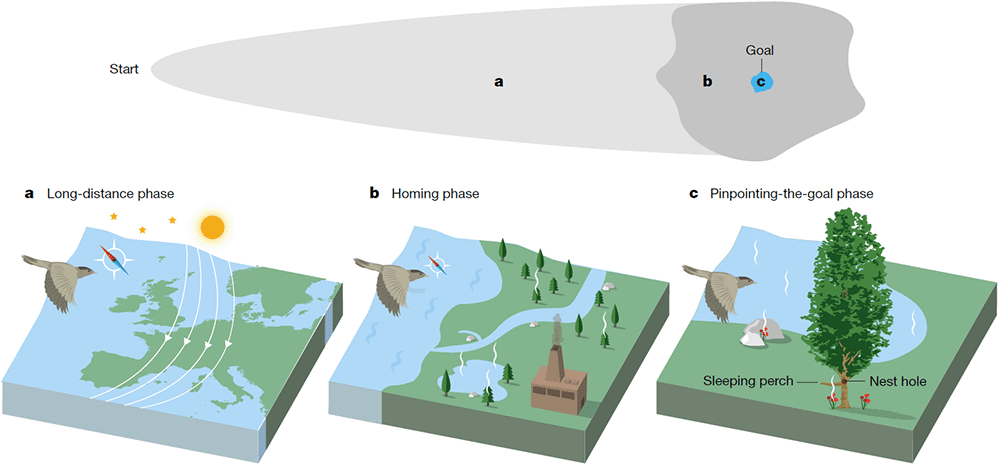
The three different phases of a long-distance navigational task and examples of the typical cues used. a, During the long-distance phase, celestial and magnetic compass and map cues are very important and landmarks such as coastlines can function as physical constraints. b, During the homing phase, compasses are usually still important and regional map cues such as olfactory and visual landmarks, olfactory gradients, strong magnetic anomalies, and soundscapes become important. c, During the pinpointing-the-goal phase, specific within-habitat cues such as a cave entrance, a specific tree, or a smelly lake are needed to locate, for example, a nest hole or sleeping perch. (Mouritsen, 2018)
For centuries, humans have been fascinated by how migratory animals find their way over thousands of kilometres. Here, I review the mechanisms used in animal orientation and navigation with a particular focus on long-distance migrants and magnetoreception. I contend that any long-distance navigational task consists of three phases and that no single cue or mechanism will enable animals to navigate with pinpoint accuracy over thousands of kilometres. Multiscale and multisensory cue integration in the brain is needed. I conclude by raising twenty important mechanistic questions related to long-distance animal navigation that should be solved over the next twenty years.
编辑:张雨宁
原文信息:Mouritsen, H. Long-distance navigation and magnetoreception in migratory animals. Nature 558, 50–59 (2018). https://doi.org/10.1038/s41586-018-0176-1.



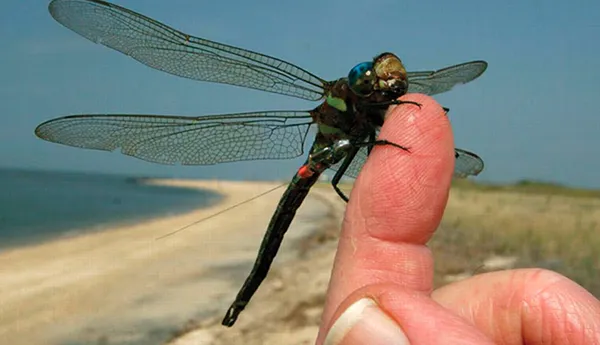


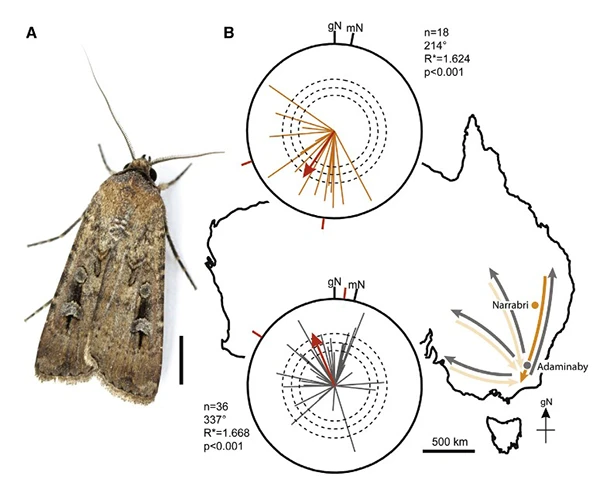

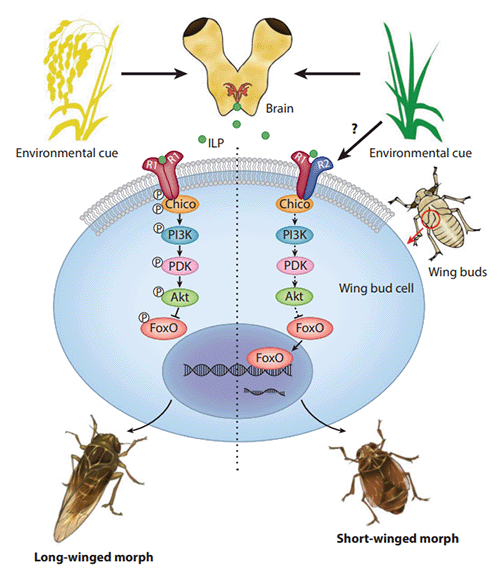
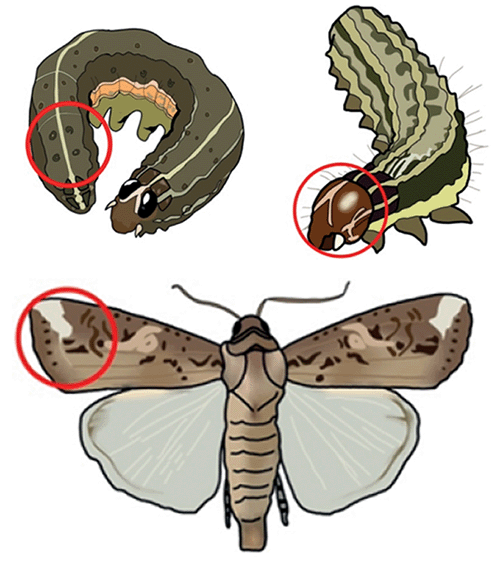


发表回复